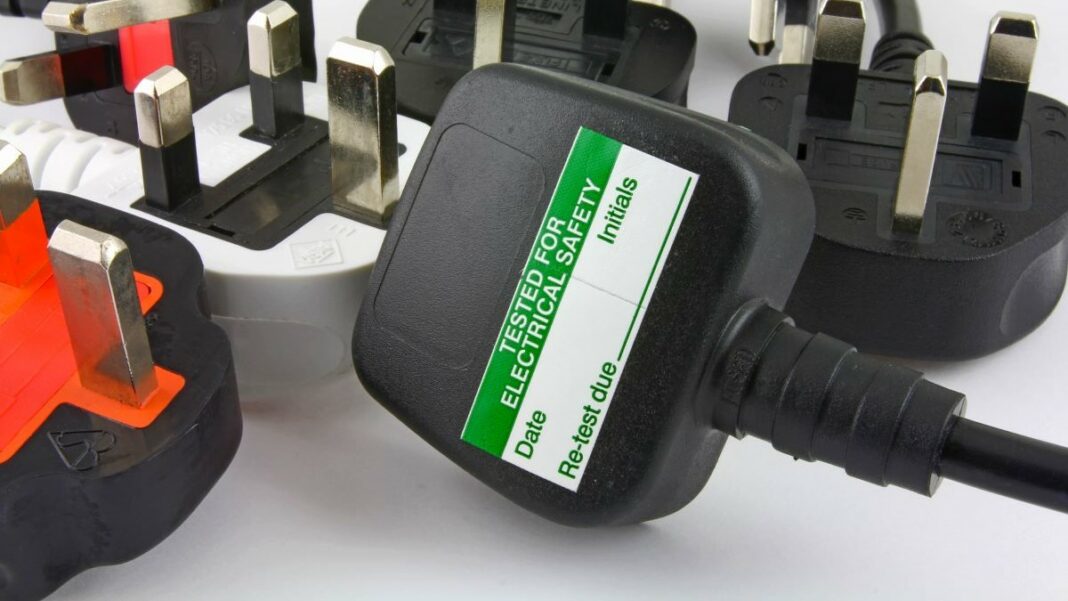Featured image by Richard z
PAT testing isn’t just about checking plugs and sticking green labels on appliances. There’s more to it than that, and whether you perform PAT tests in-house or have a PAT company do them for you, keeping records is essential.
PAT is an acronym for “portable appliance testing.”
Anything with a plug that you can use away from your main power source qualifies as an appliance and needs to be tested. This includes electric drills, monitors, printers, and PCs. Following are the PAT testing records you should keep.
RELATED ARTICLE: HOW OFTEN YOUR FIRE ALARMS SHOULD BE TESTED
PAT Testing Equipment
PAT testing equipment is available in a wide range of styles and sizes. Some even offer additional features such as barcode scanners. This feature will allow you to easily record important information such as the test date or name of the tester in the register.
Qualified personnel should visually inspect all equipment daily for apparent damage and danger signs. However, it is down to the “duty holder” (usually the person in charge of an area or department) to ensure regular testing of all appliances and to record the results.
This is particularly important for hand-held equipment such as power drills and angle grinders. This is because workers are more likely to drop these appliances or entangle their cables in furniture. Their cables are also prone to getting frayed. This is because people who are using these appliances rub against the cables as they work.
Regular PAT tests will significantly reduce the likelihood of accidents occurring. They will help safeguard staff from potentially fatal injuries.
Interestingly, musicians and entertainters must also do PAT testing, since they use electrical equipment such as amplifiers and lighting rigs when they practice and perform.
PAT Tests
Any electrical item that plugs into a socket needs PAT testing. This includes anything from electric drills and monitors to kettles and IT equipment. No regulations stipulate specifically which items you should test. However, the Health and Safety Executive recommends that all appliances be tested, whether they fall into Class 1 or Class 2.
The equipment should undergo user checks, formal visual inspection, and electronic tests. The frequency of these tests depends on the type and use of the equipment. For example, hand-held appliances that are likely to be damaged may need to be tested more frequently than stationary items. Also, Class 1 appliances require more frequent testing than Class 2 items.
Every PAT test should be carried out by a person trained to do so. This is usually a professional electrician, but this may not always be possible. When this is the case, you can use a dedicated PAT tester. This equipment allows for the downloading of records directly into a computer-based system. A dedicated PAT tester can even print labels.
PAT Test Reports
Although not a legal requirement, keeping PAT test reports will help you describe what you have done should there ever be an incident or investigation by the HSE in the UK or OSHA in the US. The documents will help the investigator understand what you have carried out and give them insights into your working methods.
The Health and Safety at Work Act 1974 and the Electricity at Work Regulations 1989 place a responsibility on businesses to ensure that electrical equipment is in a safe condition for employees to use. PAT testing is a cost-effective way to meet this obligation and protect your employees.
RELATED ARTICLE: LAWS EVERY SMALL BUSINESS OWNER SHOULD BE AWARE OF
Conclusion
Any workplace that has electrical appliances should consider PAT testing. These can include offices, schools, and shops. In fact, this could be any environment where many people use electrical equipment for extended periods. A visual inspection can find most dangerous defects, but others need to undergo a PAT test. You should also test power cords that connect to electrical equipment. These will fall into either Category 1 or Category 2 depending on their voltage and insulation rating.
RELATED ARTICLE: ESTABLISH A SAFETY MANAGEMENT SYSTEM TO MEET OSHA STANDARDS
























